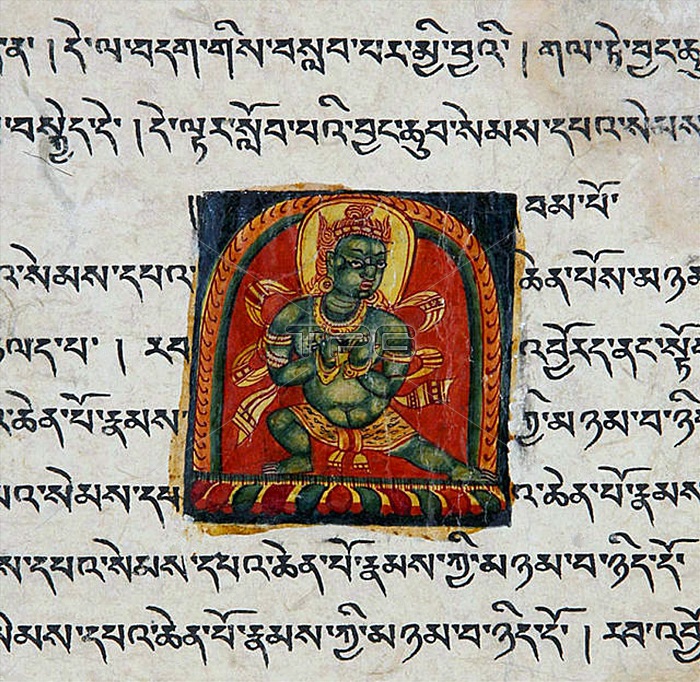
The Tibetan alphabet is an abugida of Indic origin used to write the Tibetan language as well as the Dzongkha language, Denzongkha, Ladakhi language and sometimes the Balti language. The printed form of the alphabet is called uchen script (Tibetan: ???????; Wylie: dbu-can; 'with a head') while the hand-written cursive form used in everyday writing is called um? (Tibetan: ????????; Wylie: dbu-med; 'headless'). The alphabet is very closely linked to a broad ethnic Tibetan identity. Besides Tibet, it has also been used for Tibetan languages in Bhutan, India, Nepal, and Pakistan. The Tibetan alphabet is ancestral to the Limbu alphabet, the Lepcha alphabet, and the multilingual 'Phags-pa script. The creation of the Tibetan alphabet is attributed to Thonmi Sambhota of the mid-7th century. Tradition holds that Thonmi Sambhota, a minister of Songtsen Gampo (569-649), was sent to India to study the art of writing, and upon his return introduced the alphabet. The form of the letters is based on an Indic alphabet of that period.
| px | px | dpi | = | cm | x | cm | = | MB |
Details
Creative#:
TOP27282684
Source:
達志影像
Authorization Type:
RM
Release Information:
須由TPG 完整授權
Model Release:
No
Property Release:
No
Right to Privacy:
No
Same folder images:

 Loading
Loading